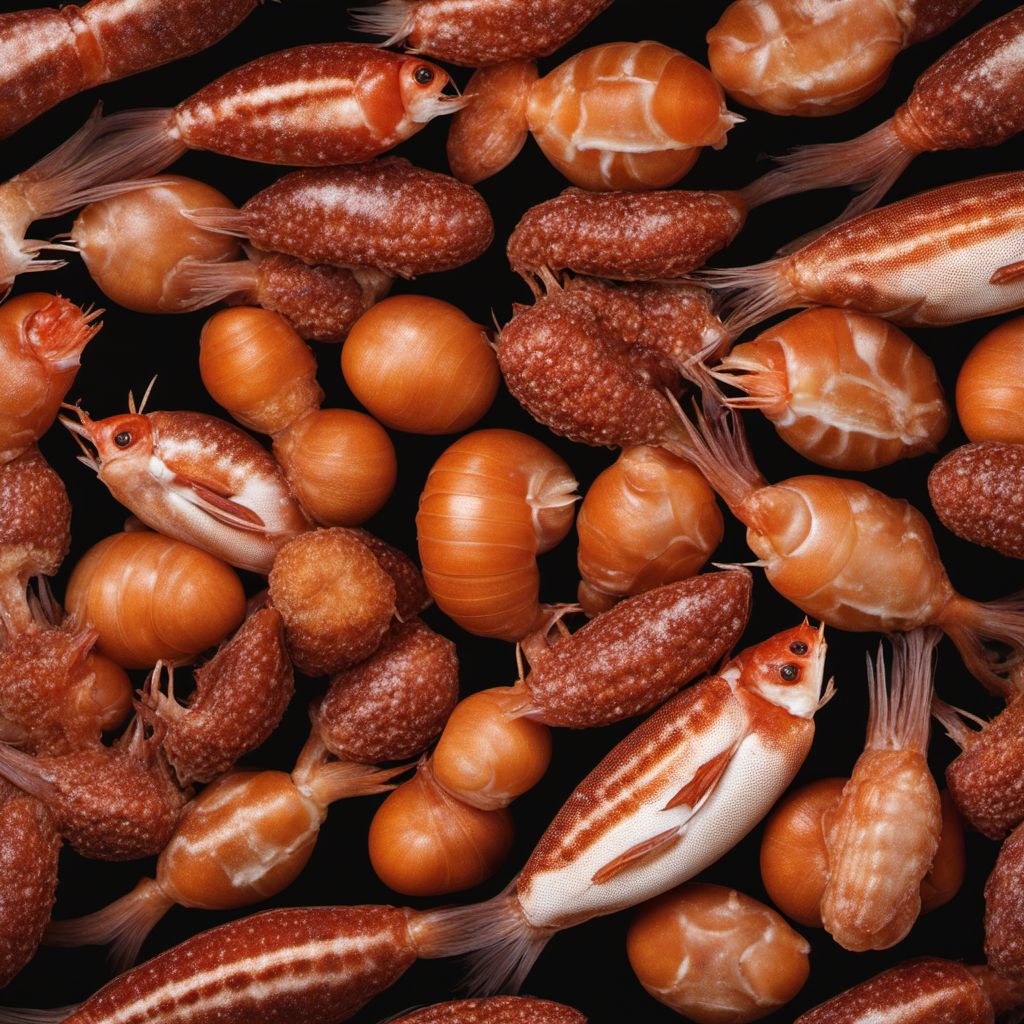
Ingredient
Freshwater crustaceans
Delicate Aquatic Gems
Freshwater crustaceans, such as crayfish and freshwater prawns, are small aquatic creatures that thrive in freshwater environments. They have a delicate, slightly sweet flavor and a tender, succulent texture. These crustaceans are often used in dishes like bisques, pasta, and salads, adding a touch of elegance and richness to the overall flavor profile.
Origins and history
Freshwater crustaceans have been enjoyed as a food source for centuries, with evidence of their consumption dating back to ancient civilizations. They are commonly found in freshwater bodies like rivers, lakes, and ponds, and are particularly popular in regions with abundant freshwater resources. These crustaceans have cultural significance in many cuisines around the world, including Cajun and Creole cuisine in the southern United States.
Nutritional information
Freshwater crustaceans are low in calories and fat, while being a good source of protein, vitamins, and minerals. They are particularly rich in omega-3 fatty acids, which are beneficial for heart health and brain function.
Allergens
May contain shellfish allergens
How to select
When selecting freshwater crustaceans, look for specimens that are lively and active, with a firm and intact shell. Avoid crustaceans that have a strong odor or show signs of discoloration or damage. Additionally, choose crustaceans that are proportional in size, as larger ones tend to have tougher meat.
Storage recommendations
To maintain the freshness of freshwater crustaceans, store them in a cool environment, ideally between 32°F and 40°F (0°C and 4°C). Keep them in a container with a damp cloth or paper towel to prevent them from drying out. It is best to consume them as soon as possible after purchase for the best flavor and texture.
How to produce
Freshwater crustaceans can be produced by setting up a freshwater tank or pond with suitable conditions for their growth and reproduction. Ensure the water quality is optimal, provide appropriate food sources, and maintain the necessary temperature and pH levels to support their development.
Preparation tips
Freshwater crustaceans can be boiled, steamed, grilled, or sautéed to enhance their natural flavors. They can be used in a variety of dishes, such as pasta, risotto, soups, and salads. To extract the maximum flavor, consider using the shells to make a flavorful stock or broth. Additionally, they can be incorporated into seafood boils or enjoyed on their own with a simple dipping sauce.
Culinary uses
Freshwater crustaceans are commonly used in dishes like crayfish étouffée, shrimp scampi, crawfish boil, and prawn cocktail. They are also popular in Asian cuisines, where they are often stir-fried with vegetables or used in hot pot dishes. These crustaceans add a touch of elegance and richness to various recipes, elevating the overall dining experience.
Availability
Commonly available in regions with freshwater bodies, such as North America, Europe, and parts of Asia.


